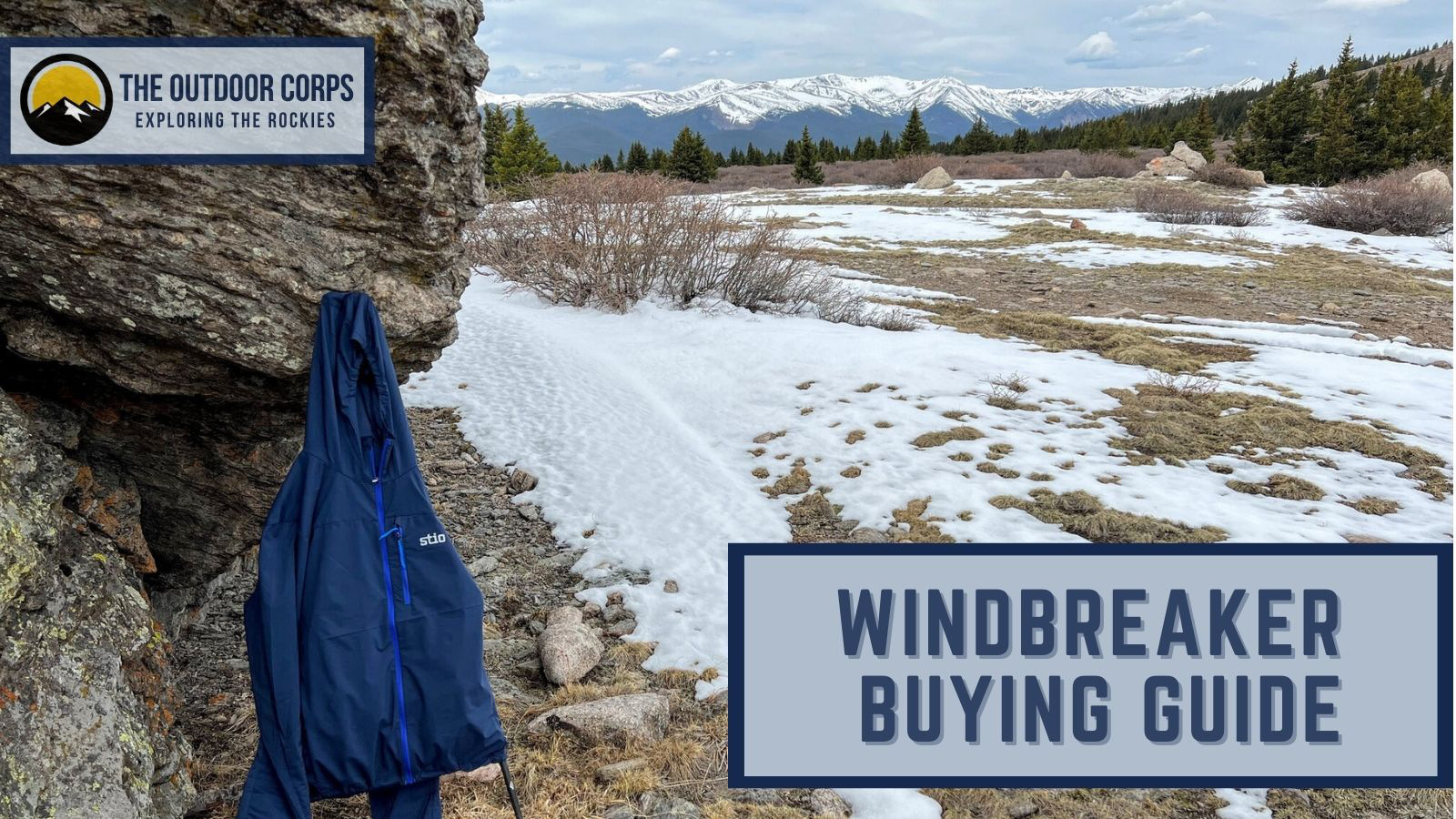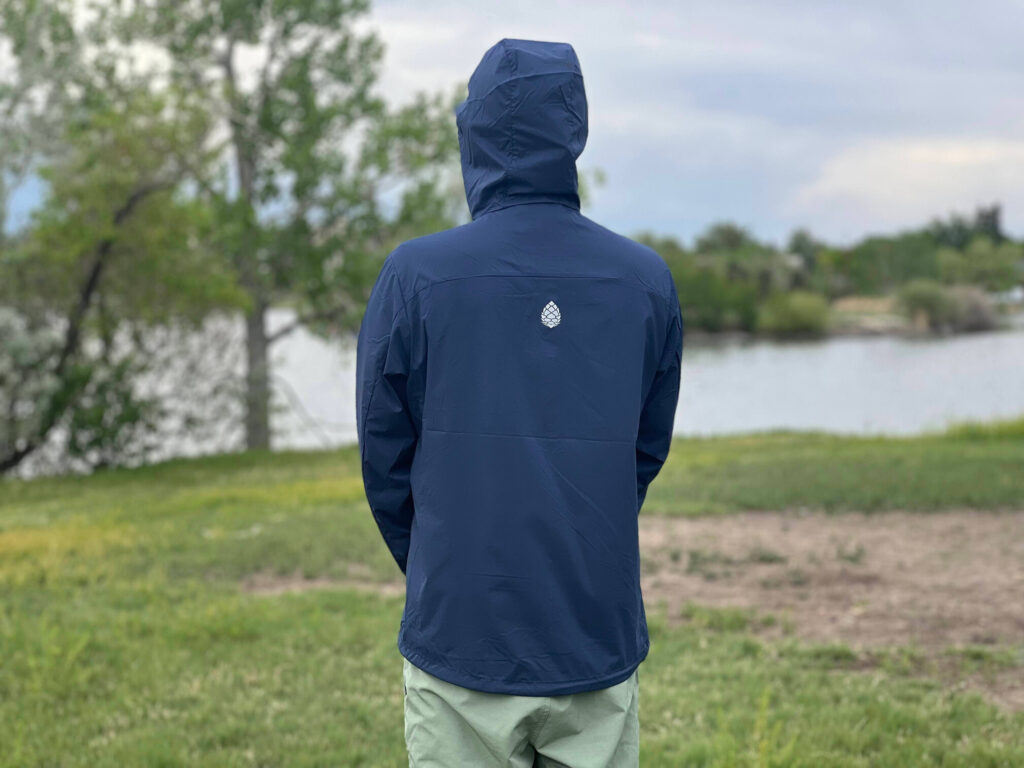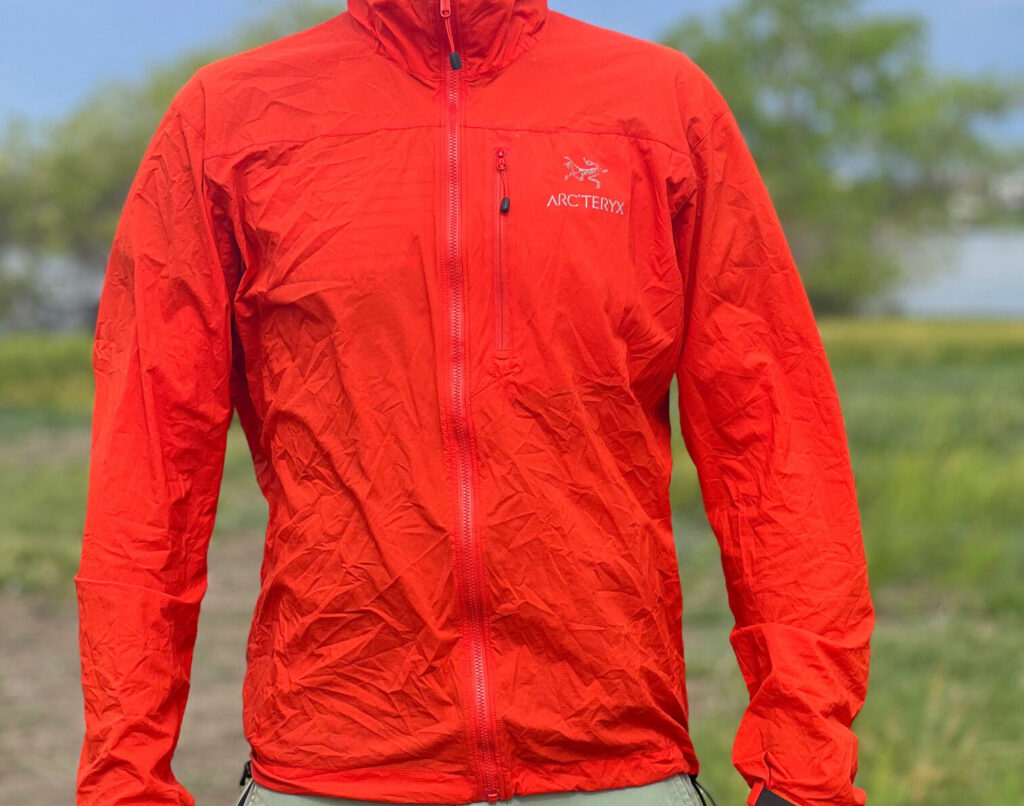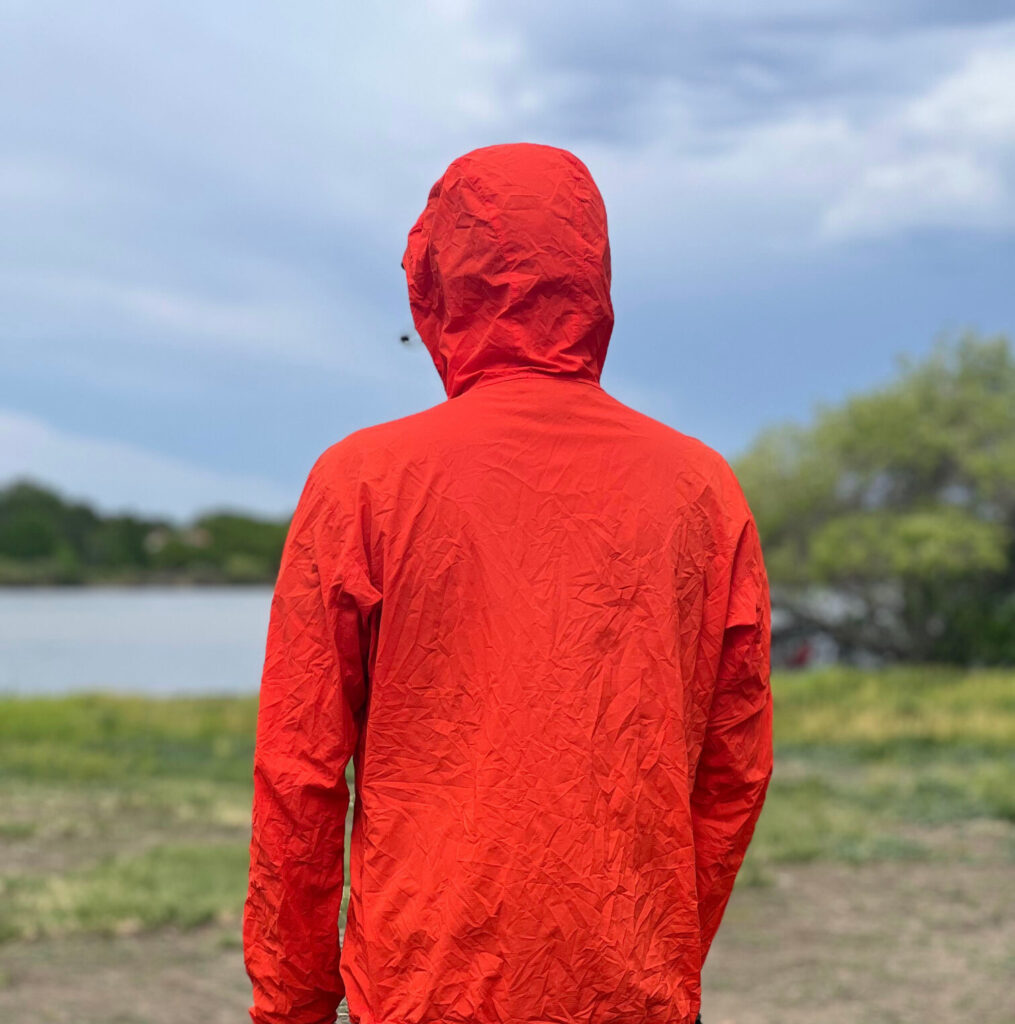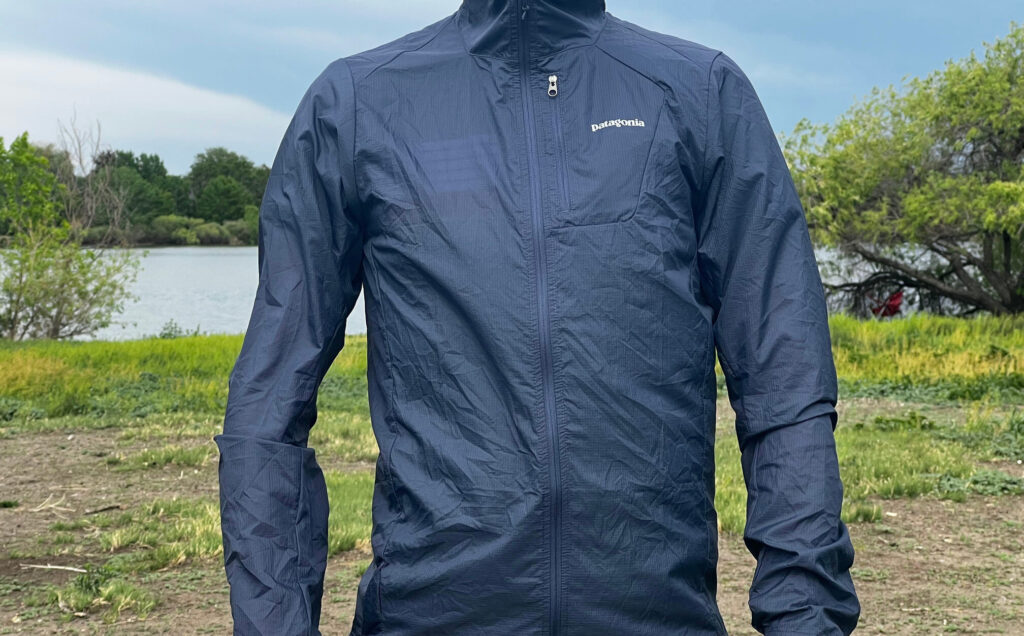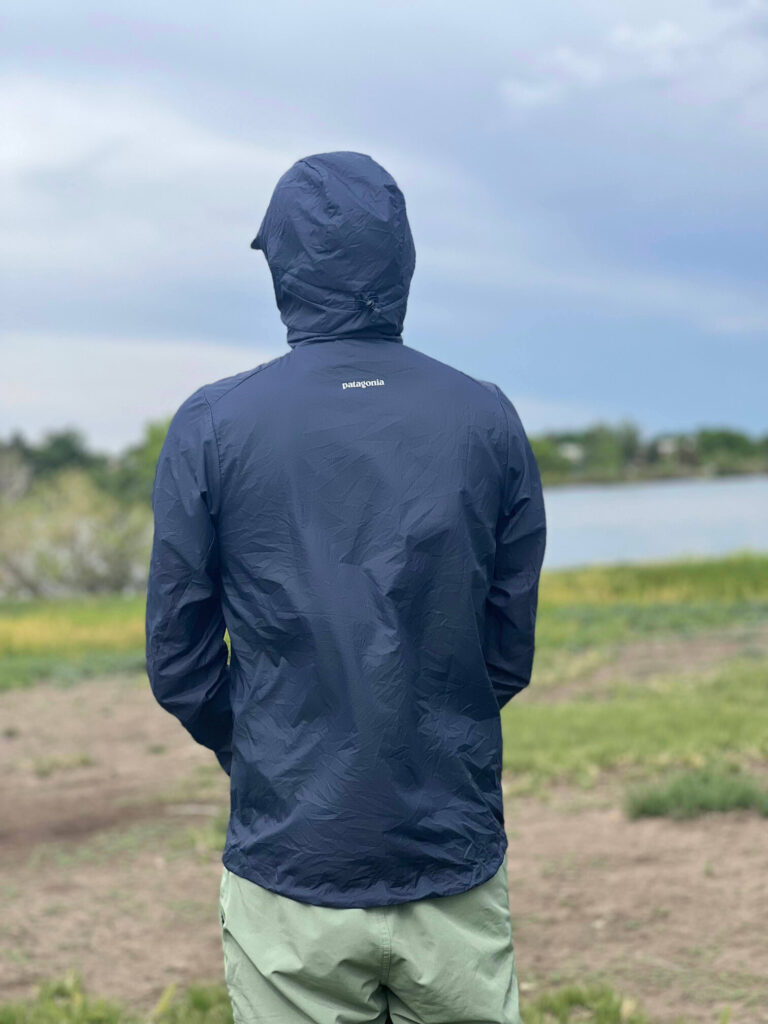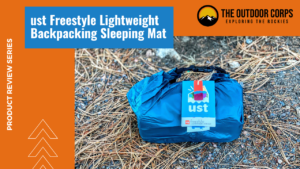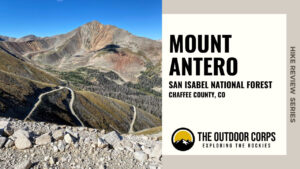A reliable windbreaker is an essential part of our pack for summer alpine hiking. Windbreakers are a versatile piece of gear that provide a bit of early morning warmth, but also serve as an emergency light rain jacket in a pinch. Since a windbreaker is a go-to piece of gear for us, we tested three of the top windbreakers from some of our favorite outdoor gear manufacturers who make durable, quality products: 1) the Stio Second Light Windshell, 2) the Arc’teryx Squamish Hoody, and 3) the Patagonia Houdini Windbreaker. Our research led to this comprehensive windbreaker buying guide intended to help you make an informed gear purchase.
Note: Products in this review were provided for review purposes. Our product reviews are independent in order to provide readers with candid gear recommendations.
Product Ratings
Wind Resistance
The main reason you are buying a windbreaker is probably to provide a semblance of wind protection. A balance of air permeability that stops wind, but allows for the material to breathe is essential. The Stio Second Light strikes that balance impeccably well; in Colorado spring temperatures, the Second Light’s rip-stop nylon fabric made fierce cooler winds on a morning alpine hike bearable. Likewise, the Patagonia Houdini performed equally well for us in high wind conditions; something that will come in handy on high altitude summits in the summer time. The Arc’teryx Squamish on the other hand did not perform as well at stopping chilly winds for us, which was disappointing given the heavier fabric.
Water Resistance
We like windbreaker jackets because of their versatility. Indeed, windbreakers with water repellant coatings are great options in light rain and can double as an emergency rain jacket. Each of these windbreakers is treated with a Durable Water Repellant (DWR) coating that can shed light rain. The Stio Second Light and the Patagonia Houdini both performed equally well at keeping us dry in some light spring Colorado rain. We were impressed that the thin nylon material of these jackets kept our base layer dry. However, the Arc’teryx Squamish did not perform as well in extended time in similar light rain conditions, transferring dampness onto our base layer.
Breathability
Highly aerobic activities like hiking and trail running require breathable outerwear to avoid retaining too much moisture on the interior of the jacket. In the summer, we like windbreakers for morning warmth, but they must have permeability so you don’t overheat. The nylon fabric and construction of these three windbreakers make them all breathable options. The Stio Second Light’s Meridian ripstop fabric felt the most comfortable on the skin and had barely noticeable moisture retention on our daily jogs. Likewise, the Patagonia Houdini’s nylon fabric helped regulate body temperature during higher intensity workouts in 50+ degree weather, also with limited moisture retention. Finally, the Arc’teryx Squamish did build up some internal jacket moisture during more extensive workouts, making us want to shed the outer layer to dry out.
Weight
The weight difference between these three windbreakers is incredibly small; but, ounce counters care about the specifics! If you’re packing ultra-light, both the Stio Second Light and Patagonia Houdiniweigh an astonishingly light 4.0 oz and 3.7 oz., respectively. In contrast, the Arc’teryx Squamish is almost an ounce heavier at 4.9 oz. due to the burly 30 denier ripstop fabric. So, if you don’t mind a few extra tenths of an ounce, the Stio Second Light with its stronger build is ideal. But, the Patagonia Houdini is the clear winner here on weight alone.
Packability
For us, packability is a core feature of a windbreaker. When we’re not wearing the jacket, we’d like it to pack down small enough to fit into a minimalist running fastpack. Each of these windbreakers are superbly packable, but the Patagonia Houdini has the smallest packed footprint of the bunch. The Stio Second Light, with its burlier fabric, also packs down nicely and can easily compress even further into its stuff sack stylishly adorned with the Stio acorn symbol. Finally, the Arc’teryx Squamish underperforms in this area and is the least packable of the bunch.
Value
All of these are affordable windbreakers. However, from a price perspective, we’d recommend either the Stio Second Light or the Patagonia Houdini. Performance-wise, you get very comparable capabilities for budget friendly prices. While the Arc’teryx Squamish is not an overly expensive jacket, why pay more for a heavier windbreaker that is outperformed by other jackets? Opt for the Stio Second Light for a workhorse windbreaker with durable fabric. Alternatively, go with the Patagonia Houdini if budget is the only concern.
Style
Though performance is our number one concern when considering outdoor clothing, we give extra points for aesthetics and fit. If a piece of outdoor clothing can pull double-duty off the trail, even better! All of these jackets are built with an athletic style, so they are more form fitting. For instance, the Patagonia Houdini has a super trim fit, which is not the most ideal for layering. The Arc’teryx Squamish also has a trim fit, but aesthetically is more of a trail-only jacket and wrinkles very easily. Thus, we prefer the Stio Second Light because it has a balance of an athletic fit that accommodates layering and looks just as good off-trail.
OVERALL RECOMMENDATIon
The Stio Second Light Windshell scores the highest of the three windbreakers tested. The Second Light has its best marks in value, weight, packability, wind resistance, and style. Although the Patagonia Houdini Windbreaker is an extremely close second, it loses out namely on style. Finally, the Arc’teryx Squamish Hoody comes in third place due to its higher price and heavier weight.
For more equipment reviews for your next adventure, be sure to check out our other articles on our Gear Page.
Disclosure: Please note that this post contains affiliate links. We may receive a small commission if you buy a product or service through an affiliate link. This revenue helps us provide readers with content to plan amazing adventures.

